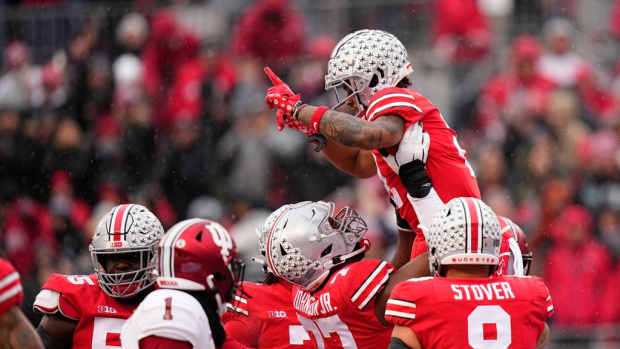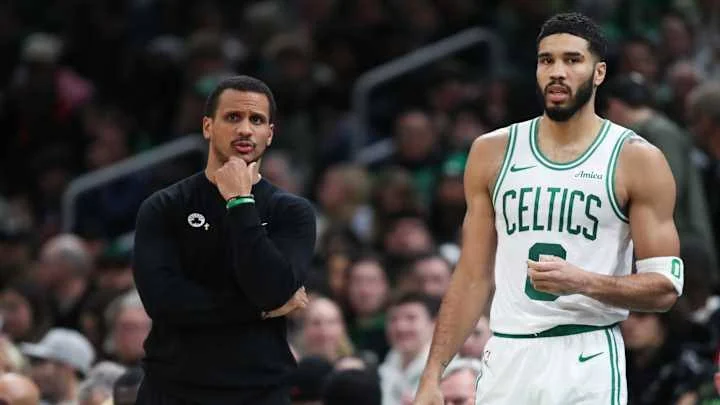Another day, another recruiting loss for Ohio State — this time at one of the program’s most urgent positions of need: edge rusher. The Buckeyes have once again missed out on a coveted four-star pass-rushing target, a troubling trend that is becoming far too familiar for a program that once thrived on producing elite defensive linemen. While fans still remember the dominant legacies of players like Chase Young, Nick Bosa, and Joey Bosa, those days feel increasingly distant. In today’s recruiting landscape, Ohio State is finding it harder to attract that caliber of talent — and it’s beginning to show.
The latest loss came when a highly sought-after four-star edge rusher, long considered a top target for Ohio State’s 2025 recruiting class, announced his commitment elsewhere — opting for an SEC power over the Buckeyes. For Ohio State, it wasn’t just a swing and miss; it was a sign of deeper issues within the program’s defensive recruiting strategy. The Buckeyes had prioritized this player, had him on campus multiple times, and invested heavily in his recruitment. And yet, when it came time for a decision, they were once again left on the outside looking in.
This isn’t an isolated incident. In recent cycles, Ohio State has consistently come up short in landing elite edge rushers. Whether it’s losing battles to Georgia, Alabama, Oregon, or even upstart programs like Tennessee and Texas A&M, the Buckeyes are no longer closing the deal with the same consistency. That’s a problem — especially considering how important edge play has become in college football. In a game increasingly dominated by explosive offenses and mobile quarterbacks, the ability to generate pressure off the edge is a non-negotiable if a team hopes to contend for national titles.
So, why is this happening? Why is Ohio State suddenly struggling to land the very type of defensive linemen who once defined its defensive identity? The answers aren’t simple, but they are serious.
First and foremost, the Buckeyes’ defensive development reputation has taken a hit. While Larry Johnson remains one of the most respected defensive line coaches in the country, the results on the field haven’t mirrored the expectations of late. The once-vaunted “Rushmen” unit has struggled to produce elite sack numbers or dominate opposing offensive lines. That lack of production doesn’t go unnoticed by recruits who are comparing development track records across top programs. When players see Georgia and Alabama defenders racking up sacks and going early in the NFL Draft, that matters. Recruits want to go where they’ll be maximized, and right now, Ohio State’s recent edge rusher development doesn’t stack up favorably.

Additionally, the instability on the defensive side of the coaching staff has created a perception problem. Recruits crave continuity and a clear vision. Over the past few years, Ohio State has shuffled through multiple defensive coordinators, adjusted schemes, and faced public criticism for defensive breakdowns in high-stakes games. When a recruit is choosing between Ohio State’s ever-evolving defensive blueprint and a Georgia program that’s dominating with a proven system, it’s easy to understand why the Buckeyes might come up short.
The NIL factor cannot be overlooked either. As much as Ohio State has made progress in establishing its NIL collectives and player compensation strategy, there remains a sense that the Buckeyes were slow out of the gate. SEC programs — particularly those in the Deep South — have embraced the new NIL era with aggressive, coordinated efforts to sweeten the deal for elite prospects. Whether publicly disclosed or not, recruits are well aware of what certain programs offer, and those offers matter. While Ohio State prefers to focus on long-term development and branding, other programs are offering immediate financial incentives that sway decisions.
Then there’s the issue of regional competition. Historically, Ohio State dominated the Midwest and had a strong national pull. But the Big Ten’s expansion and the rise of programs like Michigan, Penn State, and Oregon have created more competition for regional talent. Meanwhile, the SEC continues to mine elite athletes from the South with growing success. Simply put, Ohio State is now battling on too many fronts — and losing too many battles.
The ripple effects of these recruiting losses go beyond just the defensive line room. Missing on elite edge rushers forces Ohio State to dip into the transfer portal or rely on developmental players who may not be ready to contribute early. That disrupts the depth chart, affects scheme decisions, and limits flexibility. Worse, it signals to future recruits that Ohio State may not be the sure thing it once was for defensive standouts.
It also adds pressure on Ryan Day and defensive coordinator Jim Knowles to show results quickly. If the Buckeyes can’t land top-tier defensive talent in recruiting, they must win with what they have — and that’s a tall order when going up against the SEC’s most stacked rosters. One or two underwhelming performances on national TV could deepen the perception problem and make the recruiting hill even steeper to climb.
Fans are beginning to take notice, too. Once content to trust the process, the Buckeye faithful are now openly questioning the program’s recruiting direction — particularly on defense. They’ve seen their team lose multiple top targets in back-to-back cycles, watched Michigan pass them on the field, and observed Georgia and Alabama continue to outpace them in talent acquisition. That frustration is growing, and it’s now up to the staff to change the narrative before it becomes entrenched.
So, where does Ohio State go from here? The first step is introspection. The Buckeyes must take a hard look at their recruiting strategy, evaluate the pitch they’re making to defensive players, and determine whether they’re truly matching the intensity, creativity, and aggressiveness of the nation’s top programs. If not, adjustments must be made — immediately.
That may include taking more calculated risks on high-upside pass rushers earlier in the cycle. It might mean leaning more into NIL opportunities and building stronger partnerships with collectives. It could also involve more public messaging about defensive development, with a focus on showcasing recent NFL success stories and innovative training methods. Whatever the plan, it needs to be bold and clear. Half-measures won’t close the gap.
The transfer portal will also play a role, whether Ohio State likes it or not. Until they can reliably land elite edge rushers in high school recruiting, they’ll need to look elsewhere for immediate impact players. That means monitoring portal movement closely and being aggressive when talented edge rushers become available. It’s not ideal — but it’s the reality of modern college football.
Still, the long-term solution must be rooted in reestablishing the Buckeyes as a true destination for top-tier defensive talent. That starts with results. Winning big games. Dominating the line of scrimmage. Sending players to the NFL. These are the things that resonate with recruits more than logos or facilities. Until Ohio State consistently delivers on those fronts, it will continue to fall short in key recruiting battles.
It’s also time to consider the future of the staff. As much as Larry Johnson is beloved and respected, the question of succession looms large. At some point, the program will have to pass the torch — and they must have a plan in place to ensure a smooth transition that doesn’t cost them more momentum. The uncertainty surrounding Johnson’s eventual retirement has become a quiet but pressing concern among insiders and opposing recruiters alike. That clarity must come soon.
For now, the latest recruiting miss is another painful reminder that Ohio State’s perch atop the college football world is not guaranteed. In a sport where every program is clawing for an edge — on the field, in the living room, and through the bank account — Ohio State must adapt or risk falling further behind. One four-star edge rusher might not break a program. But string enough of these misses together, and you’re left wondering when — or if — the next Chase Young will ever walk through the doors of the Woody Hayes Athletic Center again.



